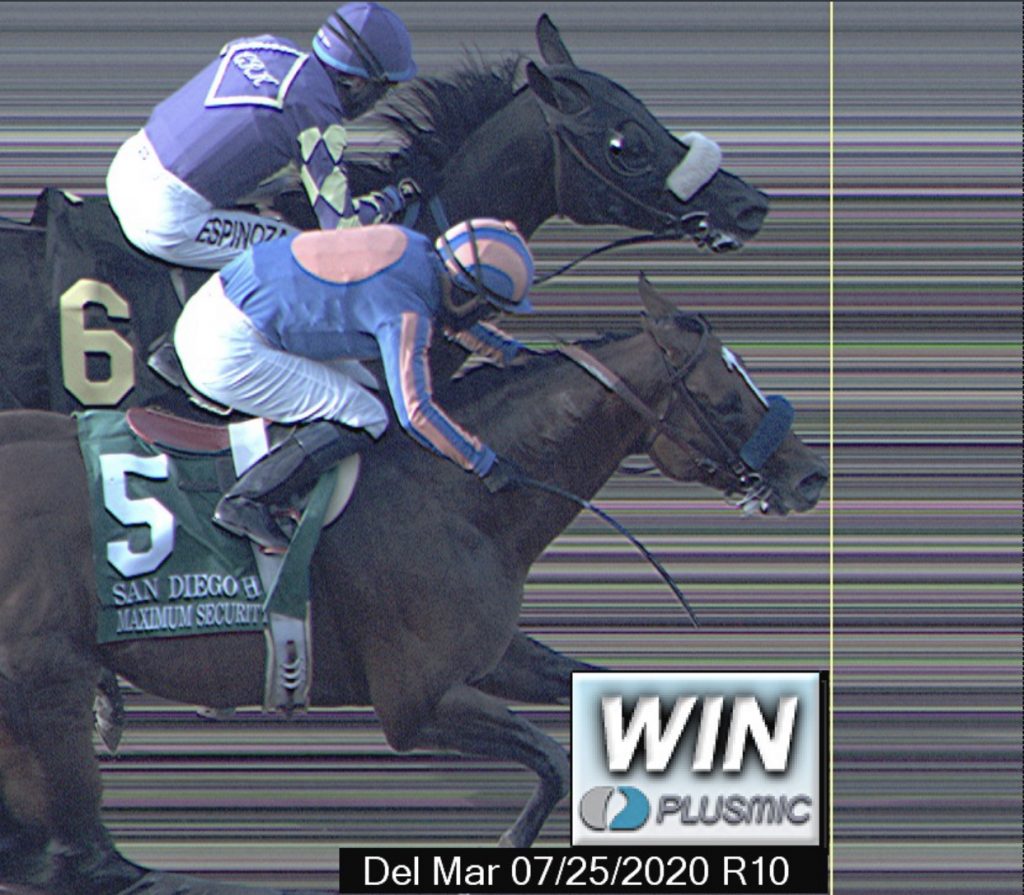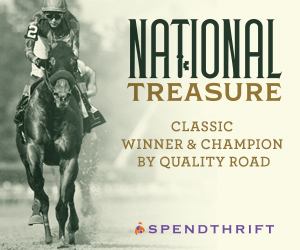
So much has changed in horse racing. The game and the sport continues to evolve and as a player you need to do the same. The sheets, and I’ll include both the original “Rags’ or Ragozins as well as Thoro-Graph in that statement have changed as well. There was a time when the sheets showed a horse to be flat out faster than the competition and you could still get a price on said horse. It also was not always visible in the past performances. Today it rarely happens and when it does the odds of getting a price, no pun intended are pretty much nil. Additionally it is usually something that will jump out in the past performances. many horses today have similar numbers and patterns, and it is all in the pattern. Now I usually identify horses who look competitive on the surface but are just too slow to win and thus can be eliminated. I’ve found this can be just as valuable, sometimes more so than finding a horse who is faster.
A look into Pick 6 King Jonathan Stettin’s introduction to “The Sheets.”
by Jonathan Stettin
There are several tools available nowadays for just about every level of handicapper from the elite professional to the beginning novice. It was not always that way and mere past performances have grown into variations of information and formats that can be staggering. You can even forego the homework and purchase picks from a multitude of sources. In this week’s column we will talk about some of these tools and go inside the figs just a bit.
Some of you who know or follow me know I have been a long time user of both Ragozins, better known as The Sheets or Rags andThoro-graph. I have become very adept at both and more often than not I can watch a race, take some notes, and pretty much tell you what figure the top finishers will receive. I wasn’t always a sheet user; however, and make no mistake, it is not as simple as seeing who has the best number and knowing who will win. To understand more, let’s go back in time some and I’ll share how I was introduced to this most valuable tool.
It had to be the mid-eighties. I was spending my days at the racetrack, in my early twenties and as I have been most of my life, I was quite dependent on my ability with a racing form. I was dangerous with the form and proved it at an early age. I wasn’t the best however, that distinction was held for a group of regular New York race trackers known to outsiders as the sheet guys. They bet big and scored big and when they loved a horse they usually won. It was easy to spot their success as beyond the valeted Porsches when they huddled under a monitor to watch a race, the cheers and high fives could be deafening. They also spent a good deal longer at the window than the average player when they went to collect. Who were these guys? They even bet differently. Any large bettor will know if you are going to bet say two thousand on a horse to win, say the 5, you don’t call the bet give me two thousand to win on the 5. You say give me two hundred and fifty to win on the five, eight times. This cuts down teller mistakes and works within most pari mutual system parameters. Get shut out on a big winner and you will learn that fast. The exception is a designated $50 dollar window with an experienced teller.
That’s how the sheet players bet. “Ice cold.” Give me two hundred and fifty to win on the 5, ten times, and give me a two hundred fifty exacta 5-1 five times. No 1-5, just 5-1. Cold! Wow. They were the only people I thought were better than I was. Were they though? Or did they just know how to use a tool I was unfamiliar with?
One crowded Saturday at Belmont back in the eighties, I was walking around with a buddy of mine in the vast grandstand. It was early and the races had not yet begun. I saw one of the sheet guys, who I will leave nameless, walking around with those weird paper cut out squares known as the sheets tucked under his arm. I was familiar enough with this gentleman to nod hello and an occasional who do you like today. I had a good enough reputation back then and as we made eye contact and nodded hello he asked me “like anything today?” I did. I loved a horse that day. Roger Attfield was shipping a Canadian horse in, a Kinghaven Farm mare who had just run big against the boys, and was at Belmont to tackle the girls in the afternoons stake. Jose Santos was aboard I believe and I was prepared to wager about half my bankroll, which was all that was between me and poverty, on her nose. I replied and said I love Carotene today. I think she’ll win. He gave me an odd look, one I hadn’t seen before and have a hard time describing. If I had to I would say the look said “shame” as in that’s a shame. He then said something I will never forget and that changed me as a handicapper forever. He said “if you like that horse you shouldn’t bet the race”.” What!”, I thought. What did this guy just say to me! Me! I picked Its In The Air to wire Davona Dale in the Alabama back in 79 and bet all I had on her. You tell me don’t bet the race. More than what he said was how he said it. It was with a knowing oh so sure confidence. The kind you need to bet a thousand dollar exacta 5-1 but not a penny on 1-5. The kind I now have when I said no way Princess of Sylmar beats Beholder in the Breeders’ Cup. Couldn’t happen, wouldn’t happen.
After all, Carotene had just run against some good colts and was now tackling fillies and mares, she wasn’t the favorite but would take what I thought was smart action, some of it mine. Don’t bet the race, are you kidding, who says that? Well my bankroll took a big hit that day as Carotene could do nothing with a perfect trip and ride.
The next morning was a Sunday. I got to Belmont early and scoured the grandstand for this sheet guy who knew I should not bet the race. There he was with those same squares tucked under his arm, standing under a monitor watching the past day replays. When he saw me he said I hope you didn’t bet that horse. I told him I had but asked him to please do me a favor and teach me how to read the sheets. The next hour sitting on a bench at Belmont changed my life as much as just about any event ever has.
I absorbed everything he told me, asked questions and made sure I understood. Ultimately the student surpassed the teacher, though I am sure he’d disagree. Nonetheless I have been a sheet player since and stand by them whole heartedly. I use both Ragozins and Thoro-graph but rarely both on the same day. The exception is usually Breeders’ Cup days. Normally I switch back and forth or use one for a certain meet.
What do The Sheets and Thoro-graph tell us not readily visible in the racing form, and of equal importance what do they tell us that regular speed figures do not? Quite a bit actually. First off, Beyer and Bris speed figures both rate horses based on how fast they ran on a given day. For the most part they deal with raw times and track variant. This can be very deceptive and can create perceptions that may not be as accurate as they could be. The Sheets and Thoro-graph take those raw times and track variants into consideration but also the trip and importantly ground loss and almost every other factor they can get in the formula. They also show what I think is the crucial element and that is patterns. Horses run in patterns and cycles, especially the good ones. Identifying these is much easier when looking at sheets. They assign a number reflective of a horses overall performance. The lower the number the faster or better the race.
Let’s not make the mistake of thinking this is a substitute for handicapping. It isn’t, nothing is. You have to do the work. It’s a tool to use and provide an edge if used and read properly. Carotene wasn’t fast enough to win that race. Plain and simple. She did not have numbers fast enough to beat the consistent numbers ran by many of her foes that day. She was not sitting on a new peak or top effort and just wouldn’t win. Remember, the biggest edge a handicapper can have is knowing a short priced horse who won’t win.
When looking at sheets you have to try and identify a pattern and when a horse will peak. Sheets alone will not tell you this, you have to read the past performances and know the trainer profiles and strengths. Once you do you will see emergences that will point out horses and point away from others. I have found sheets most helpful in eliminating shorter priced runners who aren’t as fast as their odds would suggest. A trick or perhaps method of reading the sheets which is also the correct way to read past performances is from the oldest way up to the most recent, not the other way around which is what most people tend to do. This way points out patterns and trends much more readily. Just as all who read the sheets will not come up with the same horse, as I have differed in opinion from Jerry Brown, the creator of Thoro-graph on many occasions, reading them will give you insight much of your competition does not have. That is an edge.
It is hard if not impossible for me to have the same confidence level in Beyer figures. I am uncomfortable with the too frequent revisions, and they do not really tell me anything the time of the race and variant do not. I have also seen too many instances where you see a horse that ran fast under very similar conditions as another get a much larger Beyer and vice versa. I pay no attention when posts come out announcing Beyers of the week’s eye catching performances. I do however like to see the sheet numbers. If you use Beyers you just have to always remember to factor in the trip and all your other angles before letting them steer you too hard.
Bris numbers are similar to Beyers but somewhat more comprehensive and include not only speed numbers but numbers for pace as well. If I have to look at a number to tell me where a horse figures to be I am going to be in trouble. You should be able to identify the speed through your handicapping. If you use Bris numbers as with Beyers you have to factor in the trip and your other angles.
In today’s techno world we even have Trakus, a tool I love. With Trakus you can see how many feet each horse traveled, who lost ground, who saved it, at what point in the race and even the mph of all runners. This is invaluable information. I only wish all tracks used Trakus, a GPS system with devices in the saddle cloths for tracking purposes. Andy Beyer wrote a great piece recently about run ups and time discrepancies, Trakus could solve all those issues for us by providing real and accurate times for all runners, gate to wire.
Whichever tool you’re most comfortable with and whichever one gives you both confidence and success is what you should use. They are all helpful to varying degrees and I am of the opinion too much information is not a problem. I am happy to answer any specific questions about any tools discussed in today’s column.




